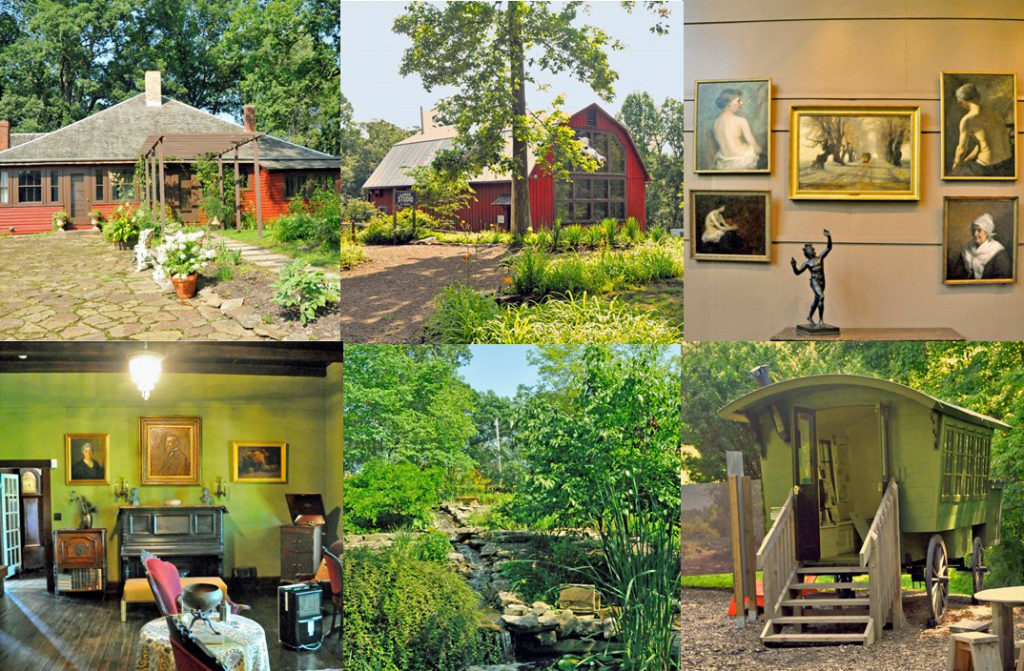One of Indiana’s earliest National Historic Landmarks, a house in Fountain City, Indiana, is not important for its architecture, but for its owners.
Because the 1793 Fugitive Slave Act authorized owners of enslaved people essentially to kidnap ones who escaped bondage, even in states outlawing slavery, abolitionists organized a network to assist individuals seeking freedom to travel as far as Canada to avoid capture. In 1813, fifteen-year-old Levi Coffin, a Quaker, began supporting this “Underground Railroad” in North Carolina. In 1826, he moved to Newport, Indiana (now Fountain City), a Quaker community, where he established a successful business and hid freedom seekers in his home until they continued their journeys north. In 1839, Coffin and his wife Catherine built an eight-room Federal-style brick house along a major north/south highway passing through Newport. The house featured a basement kitchen and a basement well, making it harder to detect Mrs. Coffin feeding extra people inside. Because of their own anti-slavery sentiments, Newport residents alerted the Coffins to bounty hunters so they could hide the freedom seekers. Their house became the “Grand Central Station of the Underground Railroad” and Levi Coffin was dubbed the “President of the Underground Railroad.” During the 20 years the Coffins lived in Newport before moving to Ohio, they assisted about 2000 freedom seekers, all of whom made it to freedom.
The Levi & Catherine Coffin House was named a National Historic Landmark in 1966. The State of Indiana purchased the property in 1967 and opened the beautifully restored house, displaying a color portrait of Coffin, in 1970. An interpretive center, opened in 2016, provides information about the Coffins, their house and the Underground Railroad. Guided tours, available at https://www.indianamuseum.org/historic-sites/levi-catharine-coffin-house/, take visitors to secret passages where freedom seekers hid when necessary and to a replica of wagons they traveled in, concealed under grain bags.

Comments are closed.